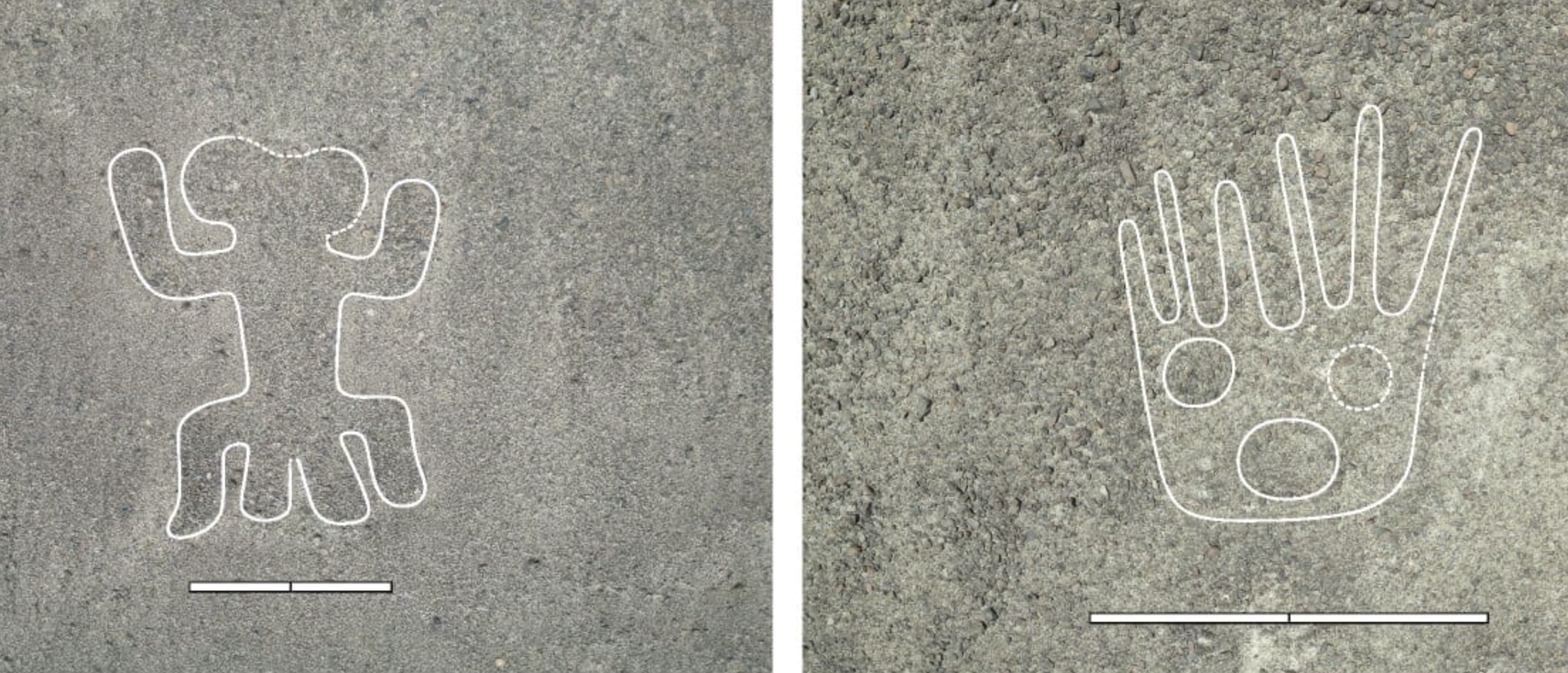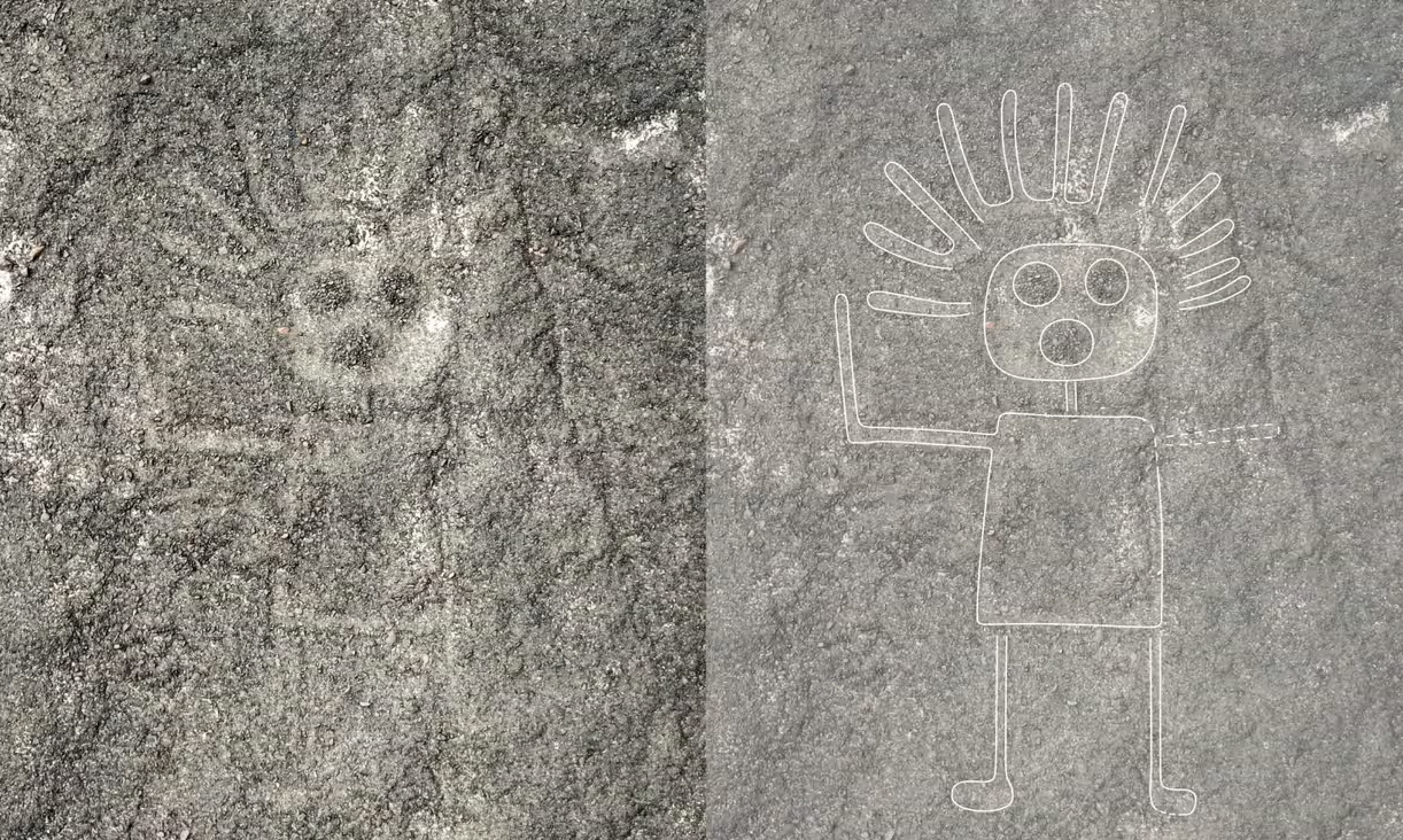
If you visit one tourist site in Peru, it will almost certainly be the ruined Incan city of Machu Picchu. If you visit another, it’ll probably be the Nazca Desert, home to many large-scale geoglyphs made by pre-Inca peoples between 500 BC and 500 AD. Many of these “Nazca lines” are literally that, running across the desert floor in an abstract fashion, but others are figurative, depicting human beings, flora, fauna, and various less easily categorizable chimeras. The preservative effects of the climate kept many of these designs identifiable by the time moderns discovered them in 1927, and thanks to artificial-intelligence technology, researchers are finding new ones still today.
“A team from the Japanese University of Yamagata’s Nazca Institute, in collaboration with IBM Research, discovered 303 previously unknown geoglyphs of humans and animals, all smaller in size than the vast geometric patterns that date from AD 200–700 and stretch across more than 400 sq km of the Nazca plateau,” writes the Guardian’s Dan Collyns.
“The use of AI combined with low-flying drones revolutionized the speed and rate at which the geoglyphs were discovered, according to a research paper published this week in the Proceedings of the National Academy of Sciences,” and many more Nazca lines could remain to be identified with these methods.

The newly identified geoglyphs “include birds, plants, spiders, humanlike figures with headdresses, decapitated heads and an orca wielding a knife,” writes CNN’s Katie Hunt. She also cites hypotheses about why the original creators of these figures did the painstaking work of displacing stone after stone to create images mostly invisible to the human eye: it’s possible that “they formed a sacred space that was perhaps a place of pilgrimage. Other theories propose they played a part in calendars, astronomy, irrigation or for movement, such as running or dancing, or communication.” Some of them, surely, were meant only for the eyes of the gods, and so it may stand to reason that only our modern gods of artificial intelligence have been able to reveal them.
via Colossal
Related content:
Take a Virtual Tour of Machu Picchu, One of the New 7 Wonders of the World
The Solar System Drawn Amazingly to Scale Across 7 Miles of Nevada’s Black Rock Desert
Peruvian Singer & Rapper, Renata Flores, Helps Preserve Quechua with Viral Hits on YouTube
Algerian Cave Paintings Suggest Humans Did Magic Mushrooms 9,000 Years Ago
A Mysterious Monolith Appears in the Utah Desert, Channeling Kubrick’s 2001: A Space Odyssey
Based in Seoul, Colin Marshall writes and broadcasts on cities, language, and culture. His projects include the Substack newsletter Books on Cities and the book The Stateless City: a Walk through 21st-Century Los Angeles. Follow him on Twitter at @colinmarshall or on Facebook.


This is one of the only things AI should be doing. Keep out of art and find things we lost.
I’m in total agreement with Joy Phillip. This is a wonderful use of AI and we need it to be used for positive projects that expand the learning of all mankind.
That one is clearly a picture of “mommy waving bye to the alien school bus” according to my daughter.